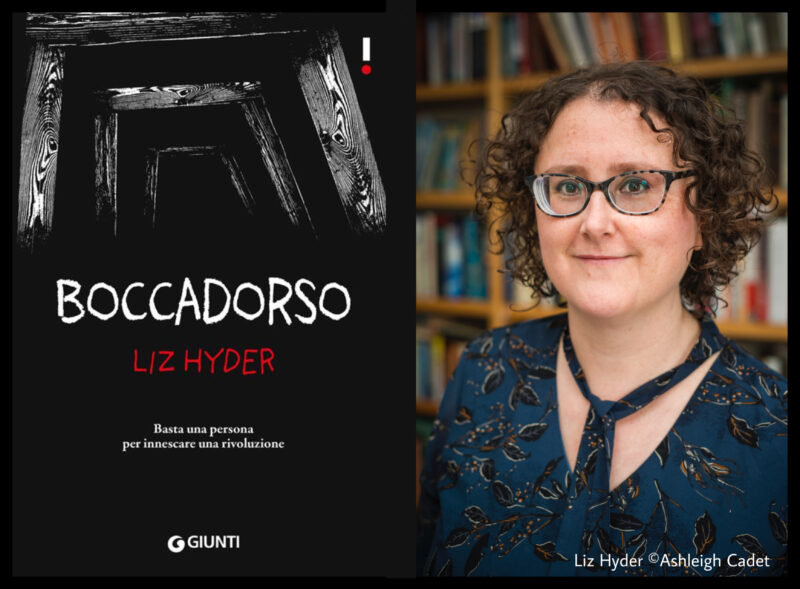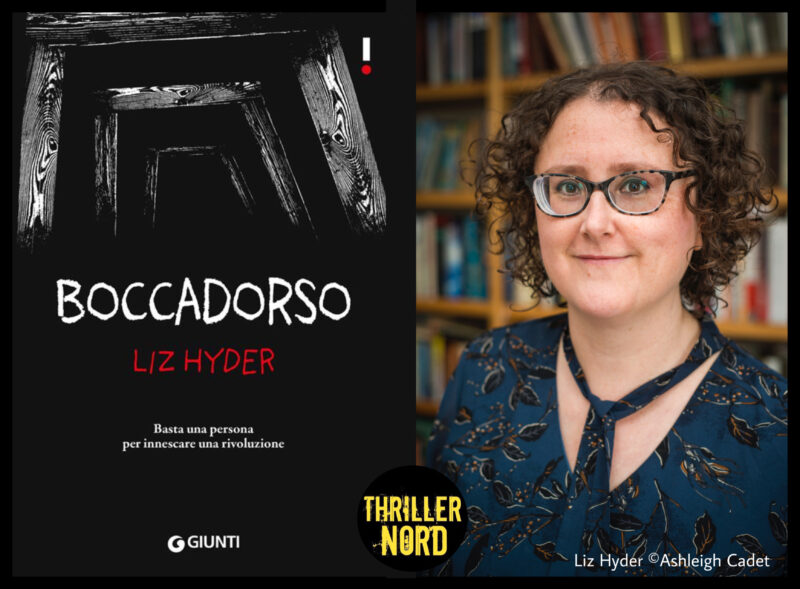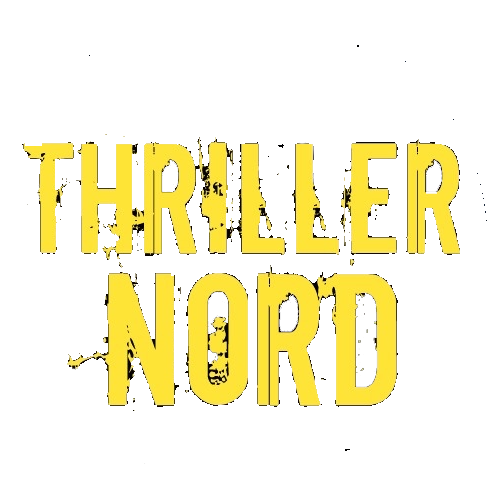A tu per tu con l’autore
How was the idea of writing a book for young adults born?
It came from a trip that I took down the Llanfair Slate Caverns, a real mine on the Welsh coast some years back. I found it a fascinating place, full of old rusting equipment, dripping with moisture and atmosphere. The boys that worked down there used to have their right nostril slit on their first day to prove they were ‘man’ enough to work there, the stretchers for those injured down there looked, to me, exactly like lidless coffins and, in the main hall, there was a figure in the rocks if you looked up. The workers used to doff their caps to it as they came and went each day. I found it a fascinating and horrifying place and thought it would be a great setting for a really tense, claustrophobic story focusing on the lives of the young people in the mine.
Come è nata l’idea di scrivere un libro per giovani adulti?
È nata da un viaggio alle Llanfair Slate Caverns, una vera miniera sulla costa gallese, che ho fatto alcuni anni fa. L’ho trovato un luogo affascinante, pieno di vecchie apparecchiature arrugginite, grondante umidità e atmosfera. I ragazzi che lavoravano laggiù si tagliavano la narice destra il primo giorno per dimostrare che erano abbastanza “uomini” per lavorare lì, le barelle per i feriti laggiù mi sembravano esattamente come bare senza coperchio e,, c’era una figura tra le rocce che potevi vedere se alzavi lo sguardo e davanti alla quale gli operai si toglievano il berretto mentre andavano e venivano ogni giorno. L’ho trovato un luogo affascinante e terrificante e ho pensato che sarebbe stato un ottimo scenario per una storia davvero tesa e claustrofobica incentrata sulla vita dei giovani nella miniera.

The story takes place in a mine. Did you use historical references for the location?
Absolutely! I soon realised there was a lot more information about coal mines than slate mines so I decided Bearmouth should be in a coal mine, there’s something about the dust and darkness that felt really appropriate to the tale I wanted to tell too. The Big Pit in mid-Wales was probably one of the biggest influences on the book. It’s Wales’s National Museum of Mining and it’s an incredible place to visit. Ex-miners show you around, so you get a very personal insight into what it was like to work down there both long ago and in more recent times. I stole the names of the pit ponies in Bearmouth from the stables down there. There was also the Mines and Collieries Act of 1842 which features reports from all around the country about the working conditions within the mines and that includes real-life personal accounts from very young children. And there’s a fantastic book called The Children of the Mines by Ray Devlin about Victorian children working the mines in the Cockermouth area of the Lake District. I took both the name of Bearmouth from that book and borrowed Ray’s surname for one of the characters too. My big twist with the setting of Bearmouth is that the miners both live and work down my fictional mine, something that didn’t happen in real life.
La storia si svolge in una miniera. Hai usato riferimenti storici per la posizione?
Assolutamente! Presto mi sono reso conto che c’erano molte più informazioni sulle miniere di carbone rispetto alle miniere di ardesia, quindi ho deciso che Bearmouth avrebbe dovuto essere ambientato in una miniera di carbone, c’è qualcosa nella polvere e nell’oscurità che sembrava davvero appropriato alla storia che volevo raccontare. Il Big Pit nel Galles centrale ha probabilmente avuto una delle maggiori influenze sul libro. È il National Museum of Mining del Galles ed è un posto incredibile da visitare. Gli ex minatori fanno da guida, così si ha un’idea molto personale di com’era lavorare laggiù sia molto tempo fa che in tempi più recenti. Ho rubato i nomi dei pony a Bearmouth dalle stalle di laggiù. C’era anche il Mines and Collieries Act del 1842 che presenta rapporti da tutto il paese sulle condizioni di lavoro all’interno delle miniere e che include resoconti personali di vita reale di bambini molto piccoli. E c’è un libro fantastico intitolato The Children of the Mines di Ray Devlin sui bambini vittoriani che lavorano nelle miniere nell’area di Cockermouth nel Lake District. Ho preso sia il nome di Bearmouth da quel libro che il cognome di Ray anche per uno dei personaggi. La mia grande svolta con l’ambientazione di Bearmouth è che i minatori vivono e lavorano nella mia miniera immaginaria, cosa che non è successa nella vita reale.
Do you think that kids today are sensitive to subjects like the exploitation of workers, or oppressive power?
I think kids are interested, as we all are, in good stories. The book is very much about finding your own voice, the importance of asking questions, and standing up for what you believe in. The exploitation and oppression is very much there in the background throughout but I think that’s not unusual in terms of traditional children’s fare. Lots of fairy tales feature oppression – bad kings who overstep their mark, the Ugly Sisters in Cinderella who exploit her goodwill and kindness, the wicked stepmother who bullies the child under her care. So I think Bearmouth is very much tapping into those long-held traditions really.
Pensi che i ragazzi di oggi siano sensibili a temi come lo sfruttamento dei lavoratori o il potere oppressivo?
Penso che i bambini siano interessati, come tutti noi, alle belle storie. Il libro parla molto di trovare la propria voce, l’importanza di porre domande e difendere ciò in cui credi. Lo sfruttamento e l’oppressione sono molto presenti sullo sfondo, ma penso che non sia insolito in termini di tariffa tradizionale per bambini . Molte fiabe presentano l’oppressione: re cattivi che oltrepassano il segno, le Sorelle Brutte di Cenerentola che sfruttano la sua buona volontà e gentilezza, la matrigna malvagia che fa la prepotente con il bambino sotto la sua cura. Quindi Bearmouth attinge davvero a quelle tradizioni di lunga data.
In your opinion is it more difficult to write a book for adults or for YA/teenagers?
I don’t really see there’s a huge difference except sometimes in terms of length. Some of the best writers around are writing for children, people like Philip Reeve, Catherine Johnson, Kiran Millwood Hargrave, Danielle Jawando, Finbar Hawkins. So so many brilliant writers in the UK writing for children and young adults! Ultimately though, whichever age range you might be writing for, it’s all storytelling. The effort and research that might go into, say, a historical book for children, is totally akin to writing a book for adults. The only real difference I think is that young people are more likely to be less tolerant of a slow pace!
Secondo te è più difficile scrivere un libro per adulti o per YA/adolescenti?
Non credo davvero che ci sia un’enorme differenza tranne a volte in termini di lunghezza. Alcuni dei migliori scrittori in circolazione scrivono per bambini, persone come Philip Reeve, Catherine Johnson, Kiran Millwood Hargrave, Danielle Jawando, Finbar Hawkins. Così tanti brillanti scrittori nel Regno Unito che scrivono per bambini e giovani adulti! Alla fine, però, qualunque sia la fascia d’età per la quale potresti scrivere, è tutta una narrazione. Lo sforzo e la ricerca che potrebbero essere necessari, per esempio, in un libro storico per bambini, sono del tutto simili a scrivere un libro per adulti. L’unica vera differenza, secondo me, è che è più probabile che i giovani siano meno tolleranti nei confronti di un ritmo lento!
Liz Hyder
A cura di Cristina Bruno
Acquista su Amazon.it:

